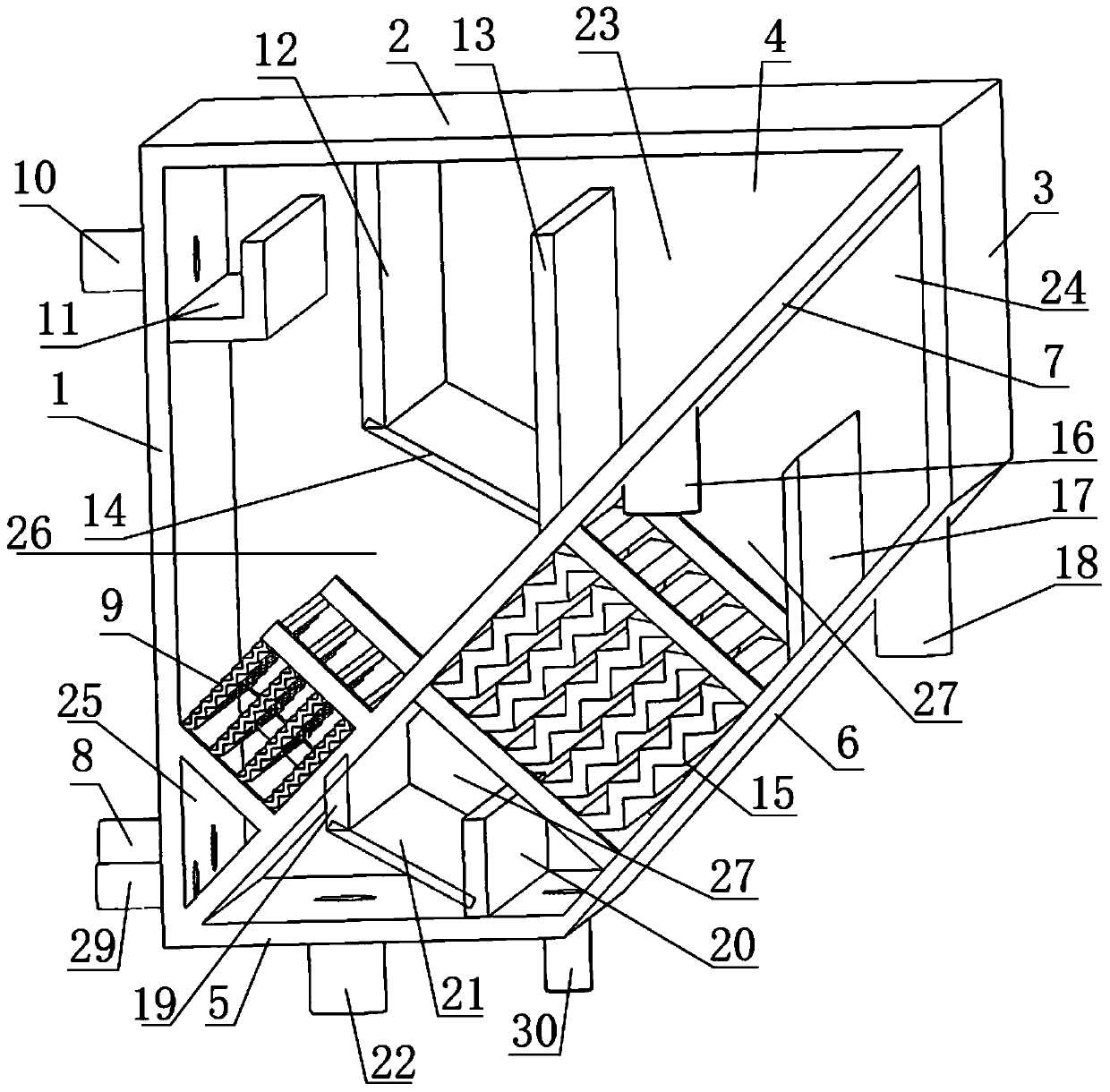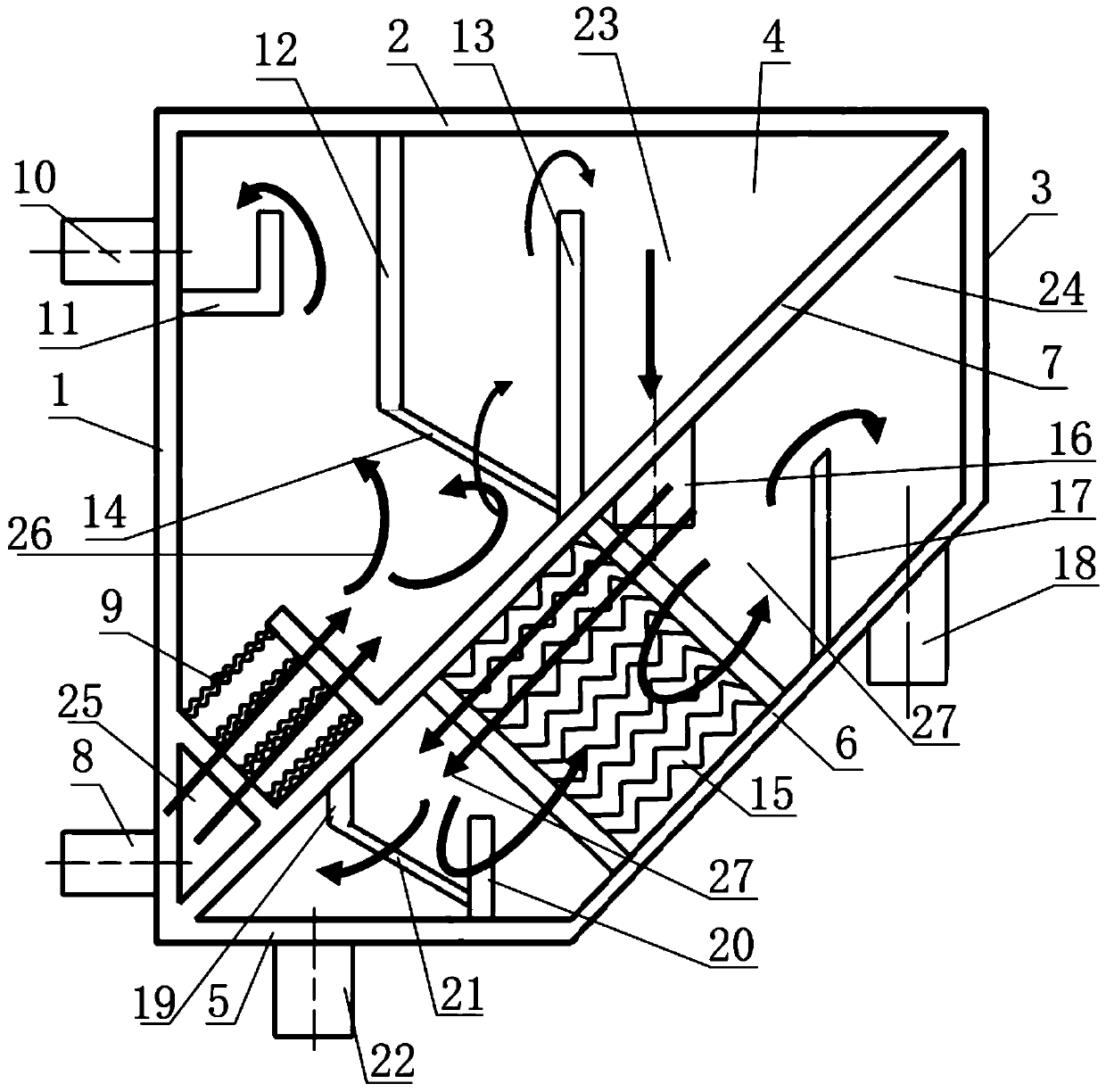Two-stage gravity separation device for oil-containing wastewater treatment, and treatment process
A technology of gravity separation and wastewater treatment, applied in water/sewage multi-stage treatment, water/sludge/sewage treatment, grease/oily substance/float removal device, etc. The problems of high intensity and labor intensity can achieve the effect of short residence time, increased oil-water separation efficiency, and small equipment footprint.
- Summary
- Abstract
- Description
- Claims
- Application Information
AI Technical Summary
Problems solved by technology
Method used
Image
Examples
Embodiment Construction
[0030] The present invention will be further described below in conjunction with accompanying drawing:
[0031] Such as figure 1 As shown, a two-stage gravity separation device for oily wastewater treatment includes a closed box, the box is composed of a bottom plate, a front side wall 1, a top plate 2, a rear side wall 3, a left side wall 4 and a right side wall (in the figure not shown, figure 1 is a schematic diagram of the structure after the right side wall is removed), the bottom plate of the box body is composed of a horizontal bottom plate 5 and a first slant plate 6 connected in sequence from front to back, and the first slant plate 6 is formed from front to back The rear direction is inclined upward, and the inside of the box body is provided with a second slant plate 7, the second slant plate 7 is inclined upward along the direction height from front to back, and the second slant plate 7 divides the inner space of the box body into a series of disconnected sections...
PUM
 Login to View More
Login to View More Abstract
Description
Claims
Application Information
 Login to View More
Login to View More - R&D
- Intellectual Property
- Life Sciences
- Materials
- Tech Scout
- Unparalleled Data Quality
- Higher Quality Content
- 60% Fewer Hallucinations
Browse by: Latest US Patents, China's latest patents, Technical Efficacy Thesaurus, Application Domain, Technology Topic, Popular Technical Reports.
© 2025 PatSnap. All rights reserved.Legal|Privacy policy|Modern Slavery Act Transparency Statement|Sitemap|About US| Contact US: help@patsnap.com


